В пучине бренного мира. Японское искусство и его коллекционер Сергей Китаев - [67]
E-7
Sergei Kitaev
One page of the Brief List, a description of his Japanese print collection, from a draft of a letter to Vasily V. Gorshanov. 1916. Department of Manuscripts, Pushkin State Museum of Fine Arts, Moscow (stock 9, inventory I, document 22).Kitaev’s letter to Gorshanov was published in the 2008 Pushkin Catalogue (vol. 2, p. 549), but without its main component, the Brief List; the second line of Kitaev’s list mentions thousands of prints by Hokusai.
Kitaev made acquisitions in all ports from Nagasaki and Kagoshima in the south to Hakodate in the north. He did not miss Otsu, famous for its folk pictures, and “the Russian village” Inasa in Nagasaki Bay, where the Russian naval base was established in 1859. On the other hand, all evident advantages notwithstanding, there was a serious problem: in port towns (especially, Yokohama and Kobe) a significant part of the art market was targeted at foreigners, as discussed below.
Kitaev had every reason to call his collection “an encyclopedia of the arts of all Japan[216].” He was not just an amateur who was buying pictures he liked, without any system. Kitaev took care to represent Japan the country through its art. The bulk of his collection was formed in Japan before 1895, when he reached the age of thirty, although he continued to add items through his agents when he settled in Saint Petersburg. He also thought about the benefits to the public and future specialists. Nagata Seiji noted in his introduction to the catalogue of the collection’s 1994 exhibition in Japan: “The huge variety of the materials of this collection is its particular feature. From the scholarly viewpoint, Japanese art is represented in a very strong fashion and conveys the sensibility of the collector. Geographically, it contains everything from the prints of Edo to those of Kyoto, Osaka and Nagasaki. For a foreigner of those days it has a rarely seen breadth[217].”
Given his collecting interests that included even chromolithographs and those prints he called “copies” (facsimiles and recuts, or akashi-han), one may ask whether Kitaev was simply omnivorous, as often happens with many well-heeled dilettantes. Yes, by all means he was a dilettante in its original meaning of “delighted one.” Its negative connotation of superficial, half-baked amateur does not become him. Judging from his letters, Kitaev had considerable knowledge of books on Japanese art in European languages, and he hired Japanese linguists to translate texts related to Japanese artists into Russian for him; in the letter that contains the Brief List, Kitaev includes excerpts from thoughts about the essence of art by Kawanabe Kyо̄sai (1831–1889). He frequently communicated directly with artists and antique dealers in Japan, visited old temples to see famous works of art and regularly showed new acquisitions to his “three friends – Chiossone, Bigot, and Gibert” – who visited him on his ship in Yokohama. Edoardo Chiossone (1833–1898) and Georges Bigot (1860–1927) are well-known in the world of Japanese art and do not require any commentary here; the third, Gibert, was a secretary to the French legation. Kitaev was also acquainted with Okakura Kakuzо̄ (1862–1913), who visited him aboard ship to view the collection and later invited Kitaev to his Tokyo School of Fine Arts.
The names of ukiyo-e masters mentioned in Kitaev’s letters to Pavlinov demonstrate that he was well-oriented in who was who. He knew the established hierarchy of artists, but he had his own eye and taste. At the start of his collecting, Kitaev was under the spell of Hokusai. “I was enamored with him more than anybody else… Later I found other artists who were more refined and elegant, and some of them no less powerful.” Revealing in this excerpt is not his fascination with Hokusai, but Kitaev’s ability to admit that there were other artists, perhaps less famous, but more refined and no less powerful: “The works of Hokkei [1780–1850] and Hokuba [1771–1844] I also like very much – there is power and harmony in them.” In the same letter, Kitaev muses on the calligraphic nature of Japanese painting:
And because of this the imagination of the Japanese is incomparably sharper than European; it often allows but a mere hint, whereas ours demands the full elaboration. The consequences of this are manifold. For us, an artist creates volume by shading, whereas, for a Japanese, a sharp outline of familiar objects would be enough. We demand perspective (albeit conventional…), and in the Japanese imagination almost all perspective draws by its own facilities: if it is necessary for a hawk to fly over a forest, an artist will draw a few upper tree branches; if the hawk sits on the ground, the artist gives its exact position on the ground and a hint of this ground at the side; sometimes the artist just indicates somewhere at the top a cliff and it is enough – the imagination of the Japanese viewer will find [the hawk] below on the ground[218].
Kitaev also provides enthusiastic insight into the Japanese aesthetic of displaying paintings:
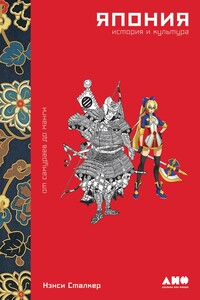
Японская культура проникла в нашу современность достаточно глубоко, чтобы мы уже не воспринимали доставку суши на ужин как что-то экзотичное. Но вы знали, что японцы изначально не ели суши как основное блюдо, только в качестве закуски? Мы привычно называем Японию Страной восходящего солнца — но в результате чего у неё появилось такое название? И какой путь в целом прошла империя за свою более чем тысячелетнюю историю? Американка Нэнси Сталкер, профессор на историческом факультете Гавайского университета в Маноа, написала не одну книгу о Японии.
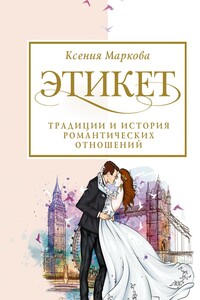
Ксения Маркова, специалист по европейскому светскому этикету и автор проекта Etiquette748, представляет свою новую книгу «Этикет, традиции и история романтических отношений». Как и первая книга автора, она состоит из небольших частей, каждая из которых посвящена разным этапам отношений на пути к алтарю. Как правильно оформить приглашения на свадьбу? Какие нюансы учесть при рассадке гостей? Обязательно ли невеста должна быть в белом? Как одеться подружкам? Какие цветы выбирают королевские особы для бракосочетания? Как установить и сохранить хорошие отношения между новыми родственниками? Как выразить уважение гостям? Как, наконец, сделать свадьбу по-королевски красивой? Ксения Маркова подробно описывает правила свадебного этикета и протокола и иллюстрирует их интересными историями из жизни коронованных особ разных эпох.
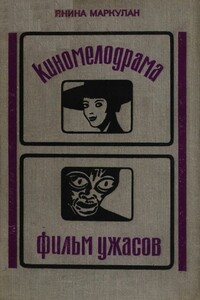
Настоящая книга Я. К. Маркулан, так же как и предыдущая ее книга «Зарубежный кинодетектив», посвящена ведущий жанрам буржуазного кинематографа. Киномелодрама и фильм ужасов наряду с детективом и полицейско-шпионским фильмом являются важнейшим оплотом буржуазной массовой культуры. Они собирают наибольшее количество зрителей, в них аккумулируются идеи, моды, нормы нравственности и модели поведения людей капиталистического мира. В поле внимания автора находится обширный материал кинематографа капиталистических стран, в том числе материал фильмов, не шедших в нашем прокате.
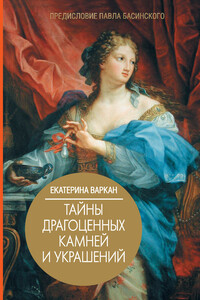
Изделия из драгоценных камней — не просто аксессуары, все они имеют особое значение в жизни своих обладателей. Изумительной красоты кольца, трости, камни, карманные часы, принадлежавшие царям и дворянам, императрицам и фавориткам, известным писателям, не только меняли судьбы хозяев, они творили саму историю! Перед Вами книга об уникальных шедеврах ювелиров и увлекательных историях вокруг знаменитых драгоценностей. Какие трости предпочитал Пушкин? Правда ли, что алмаз «Шах» стал платой за смерть Грибоедова? Что за кольцо подарил Лев Толстой своей жене Софье Андреевне? Какой подарок Александру I сделала Жозефина Богарне? Какова тайна бриллианта «Санси», и что за события связаны с жемчужиной «Перегрина»? На эти и другие вопросы отвечает автор в своей книге.
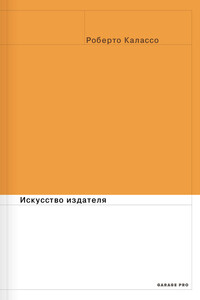
В книге Роберто Калассо (род. 1941), итальянского прозаика и переводчика, одного из зачинателей и многолетнего директора известного миланского издательства Adelphi, собраны эссе об издательском деле – особом искусстве, достигшем расцвета в XX веке, а ныне находящемся под угрозой исчезновения. Автор делится размышлениями о сущности и судьбе этого искусства, вспоминает о выдающихся издателях, с которыми ему довелось быть знакомым, рассказывает о пути своего издательства – одного из ярчайших в Европе последних пятидесяти лет.

"Ясным осенним днем двое отдыхавших на лесной поляне увидели человека. Он нес чемодан и сумку. Когда вышел из леса и зашагал в сторону села Кресты, был уже налегке. Двое пошли искать спрятанный клад. Под одним из деревьев заметили кусок полиэтиленовой пленки. Разгребли прошлогодние пожелтевшие листья и рыхлую землю и обнаружили… книги. Много книг.".